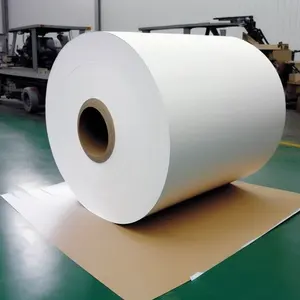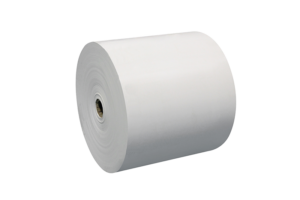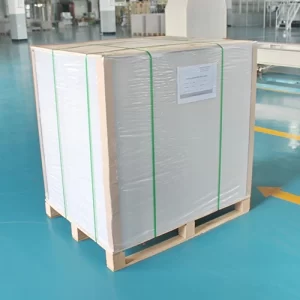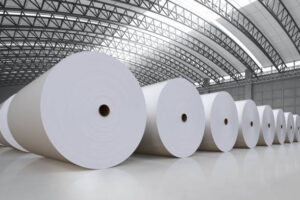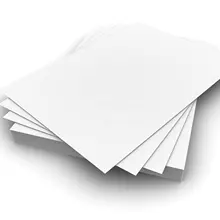What is Lightweight Offset Paper and How is it Used?
Understanding Lightweight Offset Paper
Lightweight offset paper is a type of paper commonly used in the printing industry. It is known for its light weight and excellent printability. In this section, we will explore the key characteristics of lightweight offset paper, its benefits, and how it differs from other types of paper.
What is Lightweight Offset Paper?
Lightweight offset paper is a type of uncoated paper that is often used for printing purposes. It is made from wood pulp and is known for its high bulk and smooth finish. The weight of lightweight offset paper typically ranges from 50 to 70 grams per square meter (GSM), making it lighter than other types of paper such as cardstock or art paper.
How does Lightweight Offset Paper differ from other types of paper?
One of the main differences between lightweight offset paper and other types of paper is its weight. Lightweight offset paper is significantly lighter compared to cardstock or art paper, which makes it more cost-effective for printing purposes. Additionally, lightweight offset paper has a smooth finish and excellent printability, making it ideal for projects that require detailed and sharp printing.
What are the main characteristics of Lightweight Offset Paper?
Lightweight offset paper possesses several key characteristics that make it suitable for printing applications. First, it has a high bulk, which means it has a relatively high thickness compared to its weight. This feature makes lightweight offset paper durable and resistant to tearing. Second, lightweight offset paper has excellent surface characteristics, allowing it to effectively absorb ink and produce vibrant and sharp images. Finally, lightweight offset paper is acid-free and alkaline, ensuring its permanence and longevity.
What are the benefits of using Lightweight Offset Paper?
There are several benefits to using lightweight offset paper for printing projects. Firstly, its lightweight nature reduces transportation costs, making it a cost-effective option for large-scale printing jobs. Secondly, lightweight offset paper offers high print fidelity, allowing for crisp and precise printing of text and images. Additionally, lightweight offset paper is versatile and can be used for a wide range of applications, including books, magazines, catalogs, and more.
How is Lightweight Offset Paper different from cardstock paper?
Lightweight offset paper differs from cardstock paper in terms of weight and thickness. While lightweight offset paper is relatively light and thin, cardstock paper is heavier and thicker. Cardstock is often used for projects that require a sturdier and more rigid material, such as greeting cards or business cards. On the other hand, lightweight offset paper is commonly used for projects that require high-quality printing without the need for extra thickness or weight.
How does the weight and thickness of Lightweight Offset Paper impact printing quality?
The weight and thickness of lightweight offset paper can impact the quality of printed materials. Lighter weight papers are more flexible and can be easily bent or folded, making them suitable for projects that require manipulation or folding, such as brochures or pamphlets. Thicker papers, on the other hand, can provide a more substantial feel and can enhance the durability of printed materials. The weight and thickness of lightweight offset paper should be chosen based on the specific requirements of the printing project to ensure optimal printing quality.
In conclusion, lightweight offset paper is a versatile and cost-effective option for printing projects. Its light weight, excellent printability, and durability make it an ideal choice for a wide range of applications. Whether you are printing books, magazines, catalogs, or other printed materials, lightweight offset paper provides the quality and versatility you need.
Applications and Uses of Lightweight Offset Paper
Lightweight offset paper, also known as thin paper or lightweight bond paper, is a versatile and widely used option in the printing industry. Its unique characteristics make it suitable for a variety of applications, ranging from certificates and documents to high-quality printed materials. In this section, we will explore some common applications of lightweight offset paper, its advantages, and the impact of its opacity on different uses.
What are some common applications of Lightweight Offset Paper?
Lightweight offset paper finds its applications in various industries and settings. Here are some of the common uses of this versatile paper:
- Certificates and Documents: Lightweight offset paper is commonly used for printing certificates, diplomas, and official documents. Its lightweight nature makes it easy to handle and store, while still providing a professional and elegant appearance.
- Business and Office Printing: Lightweight offset paper is an excellent choice for everyday business and office printing needs. It is often used for printing letters, memos, reports, and other administrative documents.
- Books, Magazines, and Publications: Lightweight offset paper is widely used in the publishing industry, especially for printing books, magazines, brochures, and catalogs. Its lightweight and high-quality finish make it an ideal choice for long runs and high page count applications.
- Advertising and Promotional Materials: Lightweight offset paper is commonly used for printing advertising posters, flyers, and promotional materials. Its lightweight nature reduces transportation costs, making it an economical option for large-scale printing campaigns.
- Maps and Calendars: Due to its excellent printability and durability, lightweight offset paper is often used for printing maps, calendars, and other visual aids. Its high opacity ensures that colors and details are accurately reproduced, making it ideal for precise and detailed printing.
- Art and Craft Projects: Lightweight offset paper is a popular choice for art and craft projects, such as origami, paper quilling, and paper cutting. Its flexibility and ability to hold intricate folds make it the go-to option for creative endeavors.
How is Lightweight Offset Paper used in the printing industry?
In the printing industry, lightweight offset paper is valued for its exceptional printability, smooth surface, and high-quality results. It is compatible with various printing methods, including offset printing, digital printing, and inkjet printing.
Offset printing, in particular, is a preferred method for large-scale commercial printing. Lightweight offset paper works seamlessly with offset presses, allowing for fast and efficient printing with sharp and vibrant colors. Its excellent ink holdout and dimensional stability make it an ideal choice for high-speed printing.
Digital printing technologies, such as laser and inkjet printers, also work well with lightweight offset paper. These printing methods offer the advantage of quick turnaround times and the ability to print smaller quantities. The lightweight nature of the paper ensures smooth feeding through the printer, minimizing the risk of jams or misfeeds.
The versatility of lightweight offset paper extends to its compatibility with finishing techniques, such as embossing, foil stamping, and die-cutting. These techniques add visual interest and enhance the overall appeal of printed materials.
What are the advantages of using Lightweight Offset Paper for certificates and documents?
When it comes to printing certificates and documents, lightweight offset paper offers several advantages that make it the preferred choice for many organizations:
- Professional Appearance: Lightweight offset paper lends a professional and sophisticated look to certificates and documents. Its smooth surface allows for crisp printing and excellent ink adhesion, resulting in sharp and clear text and images.
- Ease of Handling: The lightweight nature of the paper makes it easy to handle and store. Certificates and documents printed on lightweight offset paper can be conveniently transported or mailed without adding significant bulk or weight.
- Durability: Despite its lightweight construction, lightweight offset paper is durable and long-lasting. It resists tearing, wrinkling, and yellowing over time, ensuring that certificates and documents retain their quality and integrity.
- Cost-Effective: Lightweight offset paper is more cost-effective compared to other premium paper options. This makes it an attractive choice for organizations that require a high volume of printed certificates and documents.
How does Lightweight Offset Paper enhance the quality of printed materials?
Lightweight offset paper plays a crucial role in enhancing the overall quality of printed materials. Here are some ways in which this type of paper contributes to the final output:
- Excellent Ink Absorption: Lightweight offset paper has excellent ink absorption properties, which results in vibrant and vibrant colors. The ink quickly permeates the paper fibers, minimizing ink bleed and ensuring sharp and crisp prints.
- Smooth Surface: The smooth surface of lightweight offset paper allows for precise and detailed printing. Text and images appear sharp and clear, contributing to the overall professional look and readability of the printed materials.
- Consistent Color Reproduction: Lightweight offset paper provides consistent color reproduction, ensuring that the printed materials accurately reflect the intended colors. This is particularly important when it comes to branding and corporate identity.
- Enhanced Opacity: The opacity of lightweight offset paper impacts the readability and appearance of printed materials. Higher opacity ensures that text and images are not visible through the paper, enhancing the overall visual appeal and professionalism.
Where can Lightweight Offset Paper be sourced for printing needs?
Lightweight offset paper can be sourced from various paper suppliers, both online and offline. When selecting a supplier, consider factors such as quality, pricing, availability, and specific requirements for your printing projects.
The Neenah Paper company is a reputable and well-known supplier of various paper products, including lightweight offset paper. They offer a range of options in terms of brightness, finish, and base weight, allowing for customization based on specific printing requirements.
Other paper suppliers and specialty stores also carry lightweight offset paper, providing a wide selection for customers to choose from. It is recommended to compare prices, read customer reviews, and request samples before making a purchasing decision.
How does the opacity of Lightweight Offset Paper impact its usability for various applications?
The opacity of lightweight offset paper refers to its ability to prevent text and images from showing through from the other side of the paper. This characteristic is particularly important for applications where readability and privacy are crucial.
In the printing industry, higher opacity is generally preferred as it ensures that printed materials are not affected by the underlying text or images. For applications such as certificates, documents, and publications, lightweight offset paper with high opacity guarantees that the information is easily readable and does not interfere with the overall appearance.
In contrast, applications such as art and craft projects may benefit from lower opacity lightweight offset paper. This allows light to pass through the paper, creating interesting visual effects and adding depth to the artwork.
When selecting lightweight offset paper based on opacity, it is essential to consider the specific requirements of the printing project and the desired outcome. Opacity requirements may vary depending on the level of transparency desired and the nature of the printed materials.
Overall, lightweight offset paper’s versatility, high quality, and ease of use make it a popular choice for a wide range of printing applications. Its ability to enhance the appearance and readability of printed materials, along with its compatibility with different printing methods, make it a valuable asset in the world of printing and publishing. Whether it’s for certificates, documents, publications, or art projects, lightweight offset paper delivers excellent results and meets the diverse needs of both businesses and individuals.
Tips for Selecting the Right Lightweight Offset Paper
When it comes to selecting the right lightweight offset paper for your projects, there are several factors that should be taken into consideration. From choosing the appropriate GSM (grams per square meter) to selecting the right finish, these tips will help you make an informed decision for your printing needs.
1. Consider the specific project requirements
Before choosing a lightweight offset paper, it’s important to assess the specific requirements of your project. Think about factors such as the intended use of the paper, the printing method that will be used, and the desired end result. This will help you determine the characteristics you should look for in the paper.
2. Determine the right GSM for your needs
GSM refers to the thickness and weight of the paper. The right GSM for your lightweight offset paper will depend on the specific printing requirements of your project. Thicker paper (higher GSM) is typically more durable and provides a higher quality print, while thinner paper (lower GSM) is more flexible and lightweight. Consider the type of content you will be printing, the desired durability of the paper, and the printing method you will be using to determine the right GSM for your needs.
3. Select the appropriate finish
The finish of the paper refers to the texture and appearance of its surface. There are different finishes available for lightweight offset paper, with the most common options being regular and vellum finish. Regular finish has a smooth and glossy surface, while vellum finish has a slightly textured and matte appearance. Consider the aesthetic you want to achieve and the type of printing method you will be using to choose the appropriate finish for your lightweight offset paper.
4. Understand the differences between regular and vellum finish
Regular finish lightweight offset paper has a smooth and glossy surface, which results in vibrant colors and sharp images. It is ideal for projects that require high-quality printing, such as brochures, flyers, and business cards. On the other hand, vellum finish lightweight offset paper has a slightly textured and matte appearance, giving it a more refined and sophisticated look. It is often used for projects that require a more elegant and subtle finish, such as invitations and letterheads.
5. Consider the brightness and opacity of the paper
The brightness and opacity of lightweight offset paper can greatly impact the final printed result. Higher brightness levels result in crisp and vibrant colors, while higher opacity ensures that the printing on one side of the paper does not show through the other side. Consider the desired level of brightness and opacity for your project to achieve the best printing quality.
6. Understand how Lightweight Offset Paper contributes to printing quality
Lightweight offset paper is known for its excellent printability and superior ink holdout. It provides a smooth and even surface for printing, resulting in sharp and vibrant images. Additionally, lightweight offset paper offers excellent strength and durability, ensuring that your printed materials will withstand handling and transportation.
7. Follow best practices for handling and storing Lightweight Offset Paper
To maintain the quality of your lightweight offset paper, it’s important to follow proper handling and storage practices. Store the paper in a cool and dry environment to prevent moisture damage. Protect the paper from direct sunlight and sources of heat to avoid discoloration. Additionally, handle the paper with clean hands to prevent oil and dirt from transferring onto the surface.
By considering these tips, you can select the right lightweight offset paper for your specific projects. Whether you’re printing brochures, flyers, invitations, or any other materials, choosing the right paper will ensure that you achieve the desired results and deliver high-quality printed materials.
Tables
Comparison of Lightweight Offset Paper and Other Types of Paper
| Lightweight Offset Paper | Cardstock Paper | |
|---|---|---|
| Weight | Lighter | Heavier |
| Thickness | Relatively thin | Thicker |
| Printability | Excellent | Good |
| Durability | Durable | Sturdy |
| Cost | Cost-effective | Expensive |
Applications of Lightweight Offset Paper
| Application | Description |
|---|---|
| Certificates | Lightweight offset paper is commonly used for printing certificates. |
| Business Printing | It is an excellent choice for everyday business and office printing needs. |
| Books and Magazines | Lightweight offset paper is widely used in the publishing industry. |
| Advertising | It is commonly used for printing advertising materials. |
| Art Projects | Lightweight offset paper is a popular choice for art and craft projects. |
These tables provide a visual representation of the comparison between lightweight offset paper and other types of paper, as well as the various applications of lightweight offset paper.
FAQs about Lightweight Offset Paper:
What is Lightweight Offset Paper?
A: Lightweight offset paper is an uncoated type of paper used for printing, characterized by its high bulk and smooth finish.
How does Lightweight Offset Paper differ from other types of paper?
A: Lightweight offset paper is lighter than cardstock or art paper, has a smooth finish, and is cost-effective for detailed printing projects.
What are the main characteristics of Lightweight Offset Paper?
A: Lightweight offset paper has a high bulk, excellent ink absorption, and is acid-free, making it durable and ideal for sharp printing.
What are the benefits of using Lightweight Offset Paper?
A: Lightweight offset paper reduces transportation costs, offers high print fidelity, and is versatile for various printing applications.
How is Lightweight Offset Paper different from cardstock paper?
A: Lightweight offset paper is lighter and thinner than cardstock, making it suitable for projects not requiring extra weight or thickness.
In conclusion, Lightweight Offset Paper is a versatile option for various printing needs. It stands out for its quality, versatility, and compatibility with different projects. Whether it’s for certificates, documents, or crafts, this paper type offers exceptional results. Understanding its characteristics, applications, and selection tips can greatly enhance printing outcomes. When choosing Lightweight Offset Paper, factors like GSM, finish, brightness, and opacity play crucial roles in achieving the desired results. By following best practices for handling and storing this paper, you can ensure its quality and longevity for future projects.

